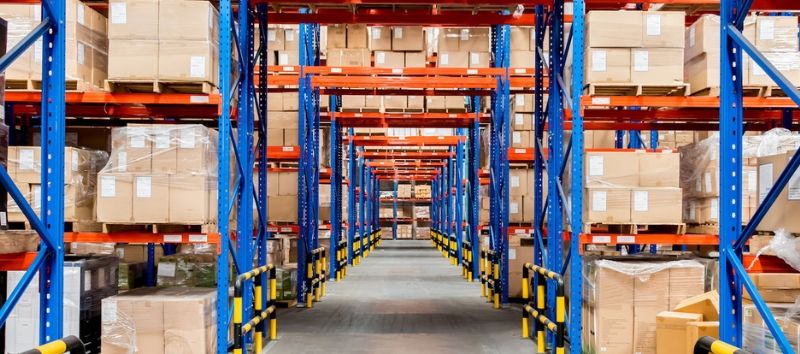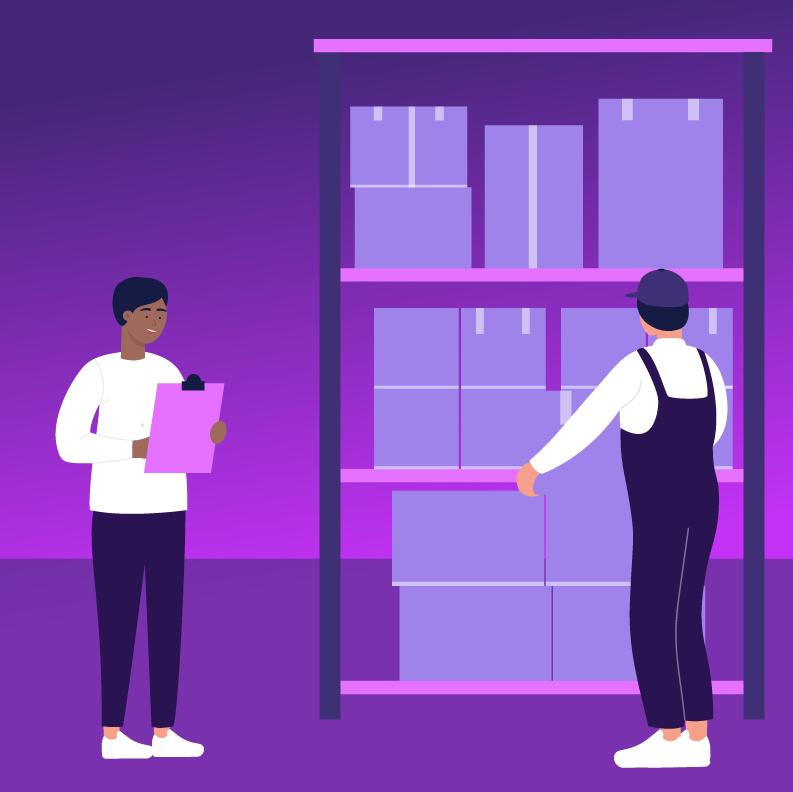The critical importance of selling on Amazon is difficult to overstate. More specifically, the benefits of selling on Amazon Prime cannot be ignored.
The marketplace giant’s Prime program plays a starring role in day-to-day operations of brands and retailers of all shapes and sizes. In fact, with 200 million Prime members worldwide spending an average of $1,400 a year — compared to the $600-per-year average spent by non-members — the Prime subscriber pool clearly offers significant opportunity to reach ready-to-spend buyers.
Today we’re going to look at the two programs that give you access to those lucrative Prime shelves: Fulfilment by Amazon (FBA) and Seller Fulfilled Prime (SFP).
While both programs allow you to sell on Amazon Prime, that’s about where the similarities end. FBA and SFP are fundamentally very different, and each one has features that appeal to certain businesses depending on size, profitability and aspirations.
To help you determine which program may be best for your business, here are five key differences between the programs.
Fulfilment
The most striking difference between FBA and SFP is the way your items are fulfilled.
As the name suggests, FBA means your inventory is completely fulfilled by Amazon. Amazon takes care of it all. You send a portion of your inventory to Amazon’s fulfilment centres, where it’s stored until a customer decides to buy it. Amazon then picks, packs and ships the items to your customers, and takes the complexity out of the fulfilment process.
With SFP, fulfilment is in your hands. Customers will purchase through Amazon Prime as usual, but your company ships the items directly with no intervention from Amazon. You use the Amazon Prime brand name and shipping rules, but it’s up to you to pick, pack and ship to your customers.
A big difference between having items fulfilled by Amazon and using SFP is that you have to pay for shipping. This can eat away at your margins and possibly result in a negative sale if you’re not careful.
SFP adds another logistical layer as well. Shipping information must be purchased through Amazon’s Buy Shipping Tool, which means you have to log into Amazon to generate and print shipping labels. To streamline and automate this process, many sellers use a third party that integrates with the Amazon Buy API.
Additionally, Amazon has strengthened its SFP requirements, making it even more difficult for sellers to remain in the program.
Whether you use FBA or SFP, you need a centralised location where you can sync inventory, track orders, identify where your products are in the supply chain, quickly react to out-of-stock inventory and forecast necessary inbound quantity. Regardless of the fulfilment method, a data-driven, reliable yet agile system like Rithum can help you successfully navigate shifts in demand and delivery, especially in times of increased pressures within the supply chain.
Fees
FBA involves fees, and they can change at any time. Amazon updates its rate structures and policies yearly — and sometimes even more frequently. Failure to account for the latest inventory storage fees in your pricing and cost structure will quickly eat into your profit.
For example, consider a lightweight standard-size t-shirt. The marketplace can charge over $4 per unit for handling, picking and packing. And if those t-shirts sit on shelves for more than six months, you’ll start to incur long-term storage fees, too. Regardless of what you’re selling, these costs can escalate fast.
SFP users, on the other hand, are able to avoid these fees, since you’re managing storage, handling, packaging and returns. It’s more work — plus you have your own shipping costs to deal with — but that bit of margin is yours to keep.
Storage
The storage of your inventory is another area that highlights the differences between these two Prime programs.
FBA is a compelling proposition for retailers selling strictly on Amazon. But for multi-channel sellers, the return on investment in FBA may diminish depending on sales volume and operational structure. Of course, you could use Amazon’s Multi-Channel Fulfilment services, but then you lose control of your precious inventory.
If you do plan to use FBA, please beware that in 2021, we have seen a trend of Amazon limiting sellers’ storage capacities. This has caused issues for sellers who have hundreds of stale (slow-moving) units sitting in FBA. We recommend, as a best practice, sending frequent, weekly shipments with smaller quantities of products you feel confident will sell rather than sending large quantities once per month or quarter.
Seller-Fulfilled Prime requires your own warehouse to control inventory and fulfilment, involving costs to acquire, maintain and staff. In addition, as a seller fulfilled (or merchant fulfilled) Prime seller, you must ship Prime orders the same day the order is received. This means your warehouse must be streamlined to process orders at high efficiency.
Inventory Control
Inventory control certainly ties in with the storage issues we just highlighted, too.
With FBA, after you’ve sent your inventory to Amazon’s fulfilment warehouses, it’s gone. This sounds like an obvious statement, but the impact of this means you’ll be limited when running promotions on other marketplaces or your own website. Careful planning will be required to avoid recalling inventory from Amazon or paying for the marketplace’s multi-channel fulfilment services.
Having Amazon house your inventory can also make things tricky when it comes to determining exactly what’s in stock and when inventory is getting stale. Amazon charges penalty fees (long-term storage fees) for inventory stored in a fulfilment center for longer than six months. To help reduce risk of incurring these costs, the FBA Inventory Management Dashboard in the Rithum platform displays current inventory levels, suggested inbound quantity, weeks of cover remaining, estimated fees and more. By using this dashboard in conjunction with the excess and aged inventory reporting out of the Seller Central Inventory Dashboard, sellers will have a good idea of which products need to be restocked, and which need to either be sold through using promotions or recalled to a seller warehouse.
With SFP, you retain complete control over your stock — there’s no splitting inventory between Amazon’s warehouses and your own. All your inventory can be stored in one central location, meaning you have complete power over your stock. This is a big plus if you sell on multiple sales channels or have a brick-and-mortar location. The benefits are even more evident when it comes to events such as Prime Day or the Cyber Five.
Returns
When your inventory is fulfilled by Amazon, the marketplace handles returns on your behalf and provides its top-class customer service. This is very useful for smaller businesses, which will benefit from the time savings and expanded resources.
With SFP, your company handles all returns and customer service. However, this effort can bring its own benefits. With FBA, Amazon manages returns and then sends sellers a general box of returned goods, making the returned merchandise difficult to trace to the original order, as no identifier is included if you choose to label with a manufacturer barcode. The product-to-consumer link is certainly less vague with SFP. You can easily identify exactly which returned item ties to which order, greatly reducing the risk of potential customer fraud.
Keep in mind, however, that Amazon requires SFP sellers to abide by the same rules that apply to orders fulfilled by the marketplace itself. That means items are automatically authorized for return at the seller’s expense without the seller being contacted first.
Plenty to Consider
It’s clear that both SFP and FBA have certain advantages and disadvantages, and they will appeal to different businesses with different aspirations.
Two final parting thoughts may help clear things up a bit more:
First, it’s worth mentioning that becoming eligible for Amazon’s SFP program comes with its own set of strict requirements. There will still be inventory to update, shipment notifications to watch and invoices to maintain.
Second, sellers that benefit most from SFP tend to leverage their inventory across multiple channels instead of selling solely on Amazon. In fact, many sellers won’t necessarily see big savings — and may even see their fulfilment costs increase slightly. But being able to sell more at higher volumes across multiple channels can make up for any costs incurred through SFP.
The FBA and SFP programs can each affect — and support — your business in different ways. If you’re still trying to make a decision between the two, or if you’re searching for insights to ensure you are taking full advantage of either program in the most cost-effective way, as the industry’s most trusted centralized e-commerce platform, Rithum can help with both FBA and SFP.
Let us handle the heavy lifting, so you can focus on growing your business.
Acting as an extension of your internal team, Rithum’s Managed Services team combines the strengths of our technology with our unmatched industry expertise to supercharge your selling and marketing efforts across Amazon and hundreds of other channels.
To help you decide whether FBA or SFP is the best approach for your business, our Managed Services team can analyze your situation with a data-driven approach that leverages the latest technology along with several years of experience of working with leading Amazon sellers. Contact us today with any questions, or requests to learn more about our solutions for first-party order support, fulfilment integrations and more.
Editor’s Note: This post was originally published in November 2017 and was updated in September 2021 for accuracy and comprehensiveness.




